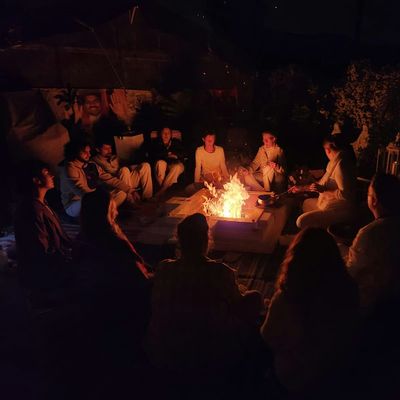

The city is not on track to meet that goal, and the target may eventually be revised to reflect the city’s broader sustainability and equity goals such as targeting under-shaded neighborhoods and public transit routes where people walk and wait.

In Phoenix, the city published a tree master plan in 2010, pledging to increase canopy cover to 25% by 2030 (from an estimated 11% to 13% at the time). Planting trees is broadly popular and has been touted as a relatively painless fix to combating climate change by world leaders including Donald Trump, Britain’s Boris Johnson and Turkish president Recep Erdoğan. New trees have been planted in the Edison-Eastlake neighborhood in Phoenix, where there is minimal shade. Mitigation will be focused on trees and infrastructure, which will be led by an urban forester and a built environment expert who are yet to be hired. “If we mean to take a hazard seriously, relying on good fortune, luck and happenstance is not the best model.” “I’m impressed by the number of programs but the death and illness numbers are moving in the wrong direction, so there’s a disconnect we need to address,” he said. Hondula recently submitted the 2022 heat response plan to city hall, in an attempt to coordinate the existing patchwork of services. “To reduce deaths, we need to be thinking way upstream and take steps to ease the housing affordability crisis and improve access to substance abuse and recovery services.” For example, too many people have trouble accessing cooling centers when they need them more signs and longer opening hours would help, as would public health campaigns asking residents who call 911 to stay with the person until first responders arrive.īut it will take much broader changes to tackle the root causes driving deaths in the most vulnerable group: middle-aged men experiencing homelessness and substance misuse problems. There are quick fire changes, or low-hanging fruit as Hondula puts it, which he thinks could have some immediate impact. The team’s success will be measured in deaths and illness numbers, but the problems and solutions are interconnected: saving lives will require redesigning the city’s heat-trapping concrete landscape, as well as improving access to cooling centers, hydration stations and paramedics. “That leaves a very short window to plan for the next hot season, and deaths represent only the tip of a big iceberg … We have almost no knowledge about what conditions people experience in their homes,” said Hondula, a climate and health scientist who has spent more than a decade investigating the risks and vulnerabilities associated with heat. Both require better data, better coordination across government, and money.įor instance, the local health department has a highly-rated surveillance system but even then, the final tally and details of summer heat related fatalities are published the following February or March. Hondula will lead a four-person team with two broad goals: protecting residents when it’s very hot (the heat response part), and coming up with long-term strategies to cool the city and make it more comfortable (the mitigation part). The population growth has led to a huge expansion in concrete infrastructure (buildings, roads and carparks) and a reduction in green areas, which has created heat islands – dangerously hot urban areas that absorb and re-emit the sun’s heat more than natural landscapes.īetween 95% and 99% of homes in Phoenix have air conditioning, yet in some surveys, as many as a third of residents in the larger metro area, more than a million people, have reported experiencing adverse effects from the heat – suggesting many cannot afford to power or repair their cooling units. Phoenix is the country’s hottest and fifth most populous city, where businesses and people began flocking when affordable air conditioning became available in the 1950s. The Phoenix area is expected to experience 25 more days above 90F by 2050


 0 kommentar(er)
0 kommentar(er)
